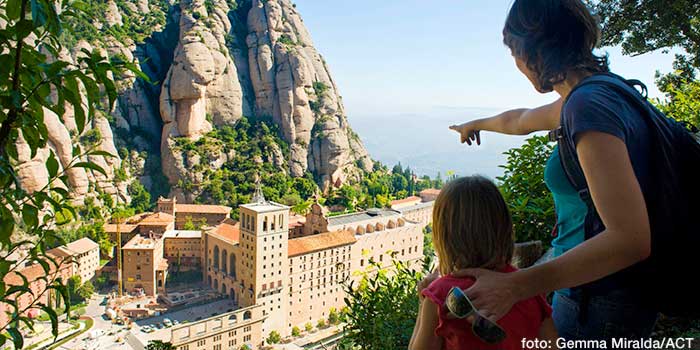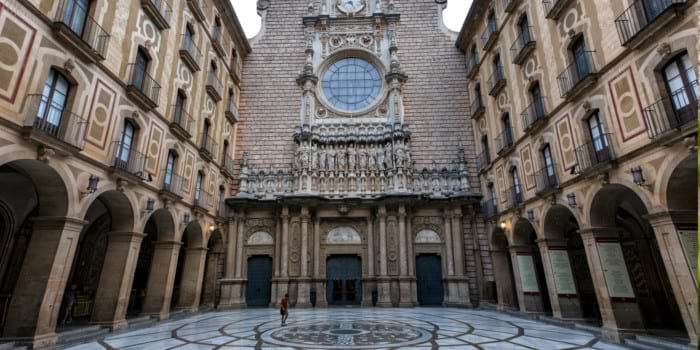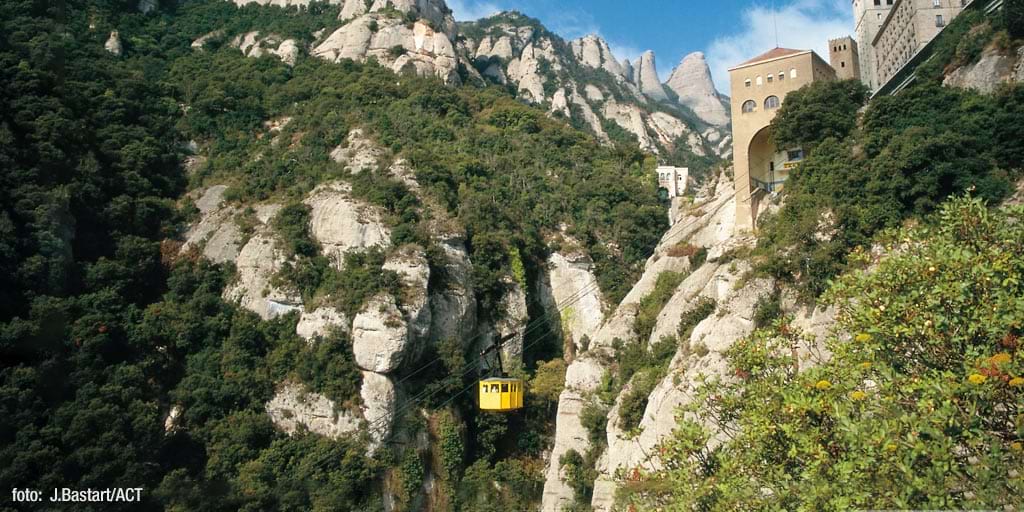Montserrat, a magical mountain
It is difficult to find a more appropriate name than Montserrat (serrated mountain) for Catalonia’s most iconic mountain range. With its unusual shapes, bold peaks and dangerous cliffs, the mountain's imposing profile cuts across the sky above the great central depression of Catalonia, while living up to its name.
Although there are many legends about its formation, the truth is that its origin dates back more than fifty million years, i.e. a time when there was a gulf in its place, into which several rivers flowed, hence depositing large masses of pebbles. Several tectonic movements caused the massif to emerge, whereas the winds and rains shaped its forms until it achieved its stunning appearance.
This geological wonder boasts highly popular peaks, such as the Cavall Bernat monolith, 1,100 metres high and the subject of many anecdotes and legends. Another notable peak is Sant Jeroni, which reaches 1,236 metres and offers exceptional panoramic views stretching from the Pyrenees to the sea and the island of Mallorca, weather permitting.
Hikers who venture to climb one of its peaks will discover the dense vegetation that covers Montserrat, consisting mainly of holm oaks, although there are also endemic species, such as yews, ancient trees associated with Celtic worship.
While nature has left a unique mark on Montserrat, it is spirituality that has ultimately defined it as a magical mountain. Legend has it that, in the year 880, some shepherds saw a strong light over the massif. Attracted by it, they made their way up the mountain until they reached what is now known as the Holy Cave, where they found an image of the Virgin Mary with Jesus on her lap. At present, this Virgin is popularly known as La Moreneta, because she is black. The shepherds notified the bishop of Vic, who ordered that she be taken to Manresa. However, it was impossible to move her, as the image became heavier and heavier. The clergyman interpreted this as the Virgin's desire to remain in Montserrat and ordered the construction of a hermitage, which later became the Benedictine monastery and abbey devoted to the worship of the Virgin of Montserrat. Since then, it has been a place of pilgrimage for thousands of believers and tourists alike.
One of these pilgrims was the German anthropologist Wilhelm von Humboldt, who in 1803 wrote an essay on Montserrat. The text conveyed much of the fascination of German Romantics, such as Goethe and Schiller, with the iconic mountain. In it, Humboldt described the mystical experience he had among its forests and ridges, in a connection with nature that elevates the human soul, as he put it. It is a deep feeling that awaits everyone who visits Montserrat.
Did you know?
Since 1977, Montserrat has also been a “UFO sanctuary” thanks to Luis José Grifol, who organises UFO sighting sessions on the 11th day of each month from an esplanade near the monastery.
More information:
Parc Natural de Montserrat Abadia de Montserrat




